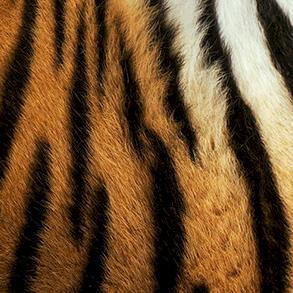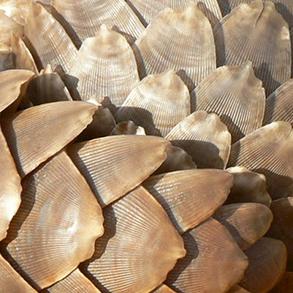
Kenyan Wildlife Service rangers are trained in new technology that involves taking air samples from unopened containers that allow specifically trained dogs and handlers to identify whether the container may hold illicit goods, including ivory and rhino horn © Juozas Cernius / WWF-UK
i
harnessing new advances in the fight for wildlife
The opportunities offered by advances in technology have fundamentally changed the way we live.
The same is true for the approaches taken by poachers and wildlife traffickers; who have taken advantage of online platforms and new tech to help them source, transport, and sell illicit wildlife products worldwide. To match this evolution in wildlife trafficking and trade we are working with partners to develop innovative tools and approaches to help enforcement counter illegal traders.
how new tech is helping conservation
New digital platforms, communication avenues, and scientific advances have opened up new ways in which conservationists can track and combat wildlife crime.
With illegal wildlife trade increasingly shifting to online platforms, and traffickers finding new and complex ways to evade detection, embracing new technology is helping to support a global response to the threats posed by poaching and illegal wildlife trade.
Whether helping develop new tools to support law enforcement detect and prosecute wildlife criminals, or bringing together global tech giants to help stamp out illegal online wildlife trade, we're harnessing the power of new technology for the benefit of people and wildlife.
a selection of projects using and developing new conservation technologies
Pháp y động vật hoang dã
Giám định pháp y động, thực vật hoang dã cung cấp bằng chứng khoa học để tiến hành điều tra tội phạm động, thực vật hoang dã, tập trung vào việc xác định danh tính của các sản phẩm từ động, thực vật hoang dã bị săn trộm hoặc buôn bán bất hợp pháp, và giải quyết các câu hỏi liên quan đến loài, nguồn gốc địa lý, tính liên đới, nhận dạng cá thể và độ tuổi của mẫu.
Mục tiêu chung của chúng tôi là đảm bảo khoa học pháp y luôn sẵn sàng hỗ trợ thực thi pháp luật về động, thực vật hoang dã ở các quốc gia Nam Phi và Đông Nam Á.
Liên Minh Toàn Cầu Chống Buôn Bán Trực Tuyến Động
Liên Minh Toàn Cầu Chống Buôn Bán Trực Tuyến Động, Thực Vật Hoang Dã Trái Pháp Luật đã thu hút các tập đoàn công nghệ trên khắp các châu lục hợp tác với các chuyên gia buôn bán động, thực vật hoang dã của WWF, TRAFFIC và IFAW nhằm ngăn chặn hoạt động buôn bán động, thực vật hoang dã trực tuyến.
Wildlife Sniffer Dogs
Wildlife detector dogs are proving invaluable in the fight against wildlife crime, and are used in a variety of ways, from anti-poaching units helping rangers in National Parks in Africa, to tracking wildlife contraband in airports.
For example, detecting hidden ivory among millions of sea containers is like finding a needle in a haystack. We have successfully tested the use of vacuum pump technology that collects vapour traces from containers, sample of which are then taken to trained dogs to determine if contraband is present.
Dự án Chống Tội phạm Động, thực vật hoang dã ở Namibia
Dự án Chống Tội phạm Động, thực vật hoang dã ở Namibia và Khu vực Kavango Zambezi, sau đây gọi tắt là CWCP, hoạt động với mục tiêu chống lại các mối đe dọa ngày càng tăng từ tội phạm động, thực vật hoang dã xuyên quốc gia đối với các quần thể tê giác và voi ở Tây Bắc Namibia và các khu vực thuộc dự án ở Khu bảo tồn xuyên biên giới Kavango Zambezi (KAZA).
Sáng kiến Cá mập và Cá đuối toàn cầu
Sáng kiến Cá mập và Cá đuối toàn cầu (GSRI) là một dự án hợp tác nhằm giải quyết cuộc khủng hoảng cá mập và cá đuối.
Mục tiêu của GSRI là đến năm 2025, tình hình bảo tồn cá mập và cá đuối thế giới được cải thiện, chấm dứt sự suy giảm, ngăn chặn sự tuyệt chủng và có thêm các cam kết bảo tồn đối với hai loài này trên toàn cầu.






